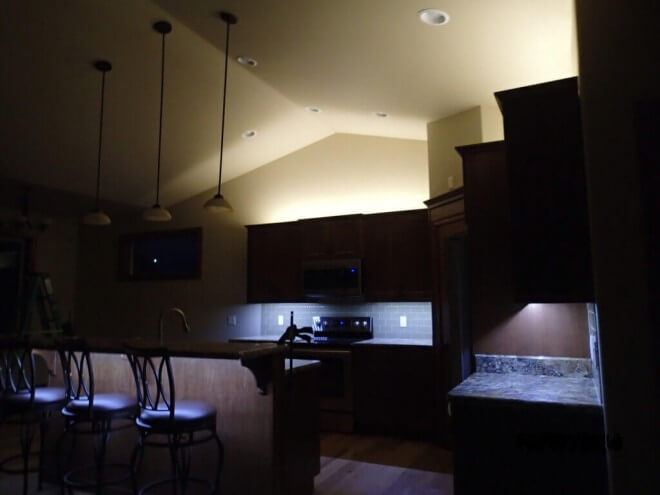
LED 101: Understanding LED Bulbs and How to Shop for the Right One
By Hagan Schmidt – 11/09/14
As the nation moves away from incandescent lights and toward energy-efficient alternatives, it’s become increasingly important for American consumers to become savvy on lighting terminology, including understanding the color rendering index. Learning these and other factors is essential when shopping.
The learning curve for LED lighting is more than many expect; it goes beyond total lumens, watts, and colors. The LED lighting industry has made huge advancements, making it possible to replace virtually any traditional bulb in the residential and commercial sectors. This blog will examine some key factors to be aware of when choosing your LED lights; after all, they may be with you for 17 years or more.
What Is the Color Rendering Index (CRI)?
LED lights have come a long way and have fantastic color rendering abilities, which is what a color rendering index (CRI) measures. Choosing the correct CRI light for your home or business is vital. CRI showcases how accurately an LED light source can render an object’s true color compared to natural sunlight. This index allows you to compare different LED light sources and features a scale of 0 to 100, with four main categories:
- Low (0-40)
- Medium (41-75)
- High (76-90)
- Very High (91-100)
What Is a Good CRI Rating for LED Lights?
Knowing which range of CRI to purchase for your application is essential when choosing LED bulbs. Some LEDs can even achieve full spectrum ratings with a high CRI LED rating of 95 or more. These CRI lights can accurately render all colors without causing color distortion.

People may wonder, “What is a good CRI rating for LED lights?” They often assume a higher color rendering index automatically means a better LED light. However, an LED light with a high CRI rating isn’t necessarily the best option for your needs.
For example, an art gallery will want a bulb with very high CRI to not discolor any of their pieces. In our homes, we typically don’t need the highest CRI; usually, a bulb with a CRI of 70 to 85 is sufficient. Professionals like those at Birddog Lighting can help determine the correct CRI rating for your home or business.
When Is a High CRI Rating Useful?
Again, most homeowners can walk away satisfied with a CRI rating between 70 to 85. However, some situations may require a higher CRI rating.
Commercial businesses displaying merchandise where color and textures are essential can benefit significantly from a higher CRI rating. For example, many retail stores use LED lighting with a CRI of 80 or more. Conversely, a lower CRI rating might be preferred for outdoor or industrial applications, as the color might not be a major priority. A higher CRI rating might also be preferred for holiday rope lights.
Lumens: Total vs. Delivered
People often misunderstand the lumen output difference between incandescent and LED lights. Knowing the difference is essential in understanding the advantages of LED lighting. There are several factors to consider, from the bulb’s design to the fixture in which it’s being used. A good example is in kitchens.
Many of the light fixtures we choose for kitchens are designed to direct light to various spots, like counters, stove, and sink. It’s vital in these settings to use light as efficiently as possible to minimize power consumption and properly light these work areas.
Incandescent bulbs typically use a series of reflectors inside the bulb or the fixture to direct the light where it needs to be. Some of the light is lost or even wasted whenever the light reflects. The light reaching the workspace (delivered lumens) can be as much as 20% to 40% less than the generated light (total lumens).

On the other hand, LEDs are very directional and can be manufactured with various beam angles. This high degree of customization in LED bulbs makes it possible to greatly reduce wasted and inefficient lumens, allowing the light to reach where needed. With the correct bulbs, the light loss is minimal, under 10%; in some cases, you can even get it down to nearly 0%.
Comparing incandescent to LED becomes more critical by looking past the total lumens to the delivered lumens. Let’s look at a 60-watt incandescent bulb with 800 lumens but generally delivering only 480 lumens. Replacing that bulb with an 800-lumen LED light will deliver at least 720 lumens.
We frequently hear that LED bulbs are much brighter than incandescent, and this is typically the reason why. If the light required was the amount you needed before the switch, you can use an even lower wattage LED replacement to achieve the 480 delivered lumen output.
Color Temperature
Color Temperatures are measured on the Kelvin scale to gauge the warmth or coolness of light. The easiest way to think about this is to imagine a flame. As a flame gets hotter, it goes from a yellowish hue to a bluish hue. The same goes for lights. Higher Kelvin temperatures emit more blue-tinted light, and lower Kelvin temperatures give off a more yellow-tinted light.
The standard incandescent light is rated at a warm color temperature of around 2700 Kelvin. Most homes commonly use these bulbs. Many LEDs are manufactured at 2700 Kelvin to give the same warm, soft light as incandescent lamps. While it’s the norm, it’s not always the best color temperature. Like with a high CRI LED index, there are additional considerations when choosing the right temperature.
A good example is in your bathroom. Have you ever gotten ready and gone outside only to discover that you look drastically different than you did inside and no longer like what you see? This situation often has to do with both the CRI and the color temperature of your lights.
While no light is truly white, between 4800K and 5200K is close. These color temperatures are typically called Pure White, Daylight White, or Natural White. Combined with a high CRI, you’ll see similar results in the mirror as out in the sunlight.
Get Professional Help for Your Selection
When you correctly combine color temperature, CRI, beam angles, and lumen output (total and delivered), you can find the proper LED for your lighting needs. Traditional forms of lighting overlook some details that help us determine the right lighting combination at greater energy and overall cost savings over the bulb’s lifetime.
After reading this, you should know how to start making choices for your home or commercial lighting needs. However, the learning curve for LEDs goes even further than these topics, and much more could be covered, from efficacy, spectral power distribution, to understanding how our eyes perceive light.
At Birddog Lighting, we understand you may not have the time to learn all the ins and outs of LED lighting. So whether you’re a DIY enthusiast wanting to broaden your knowledge of LED lighting or a busy homeowner or property manager, our team can help you choose the proper color rendering index for your needs.
Contact our Birddog Lighting team today to learn more about our goods and services, including our LED strip lights!




